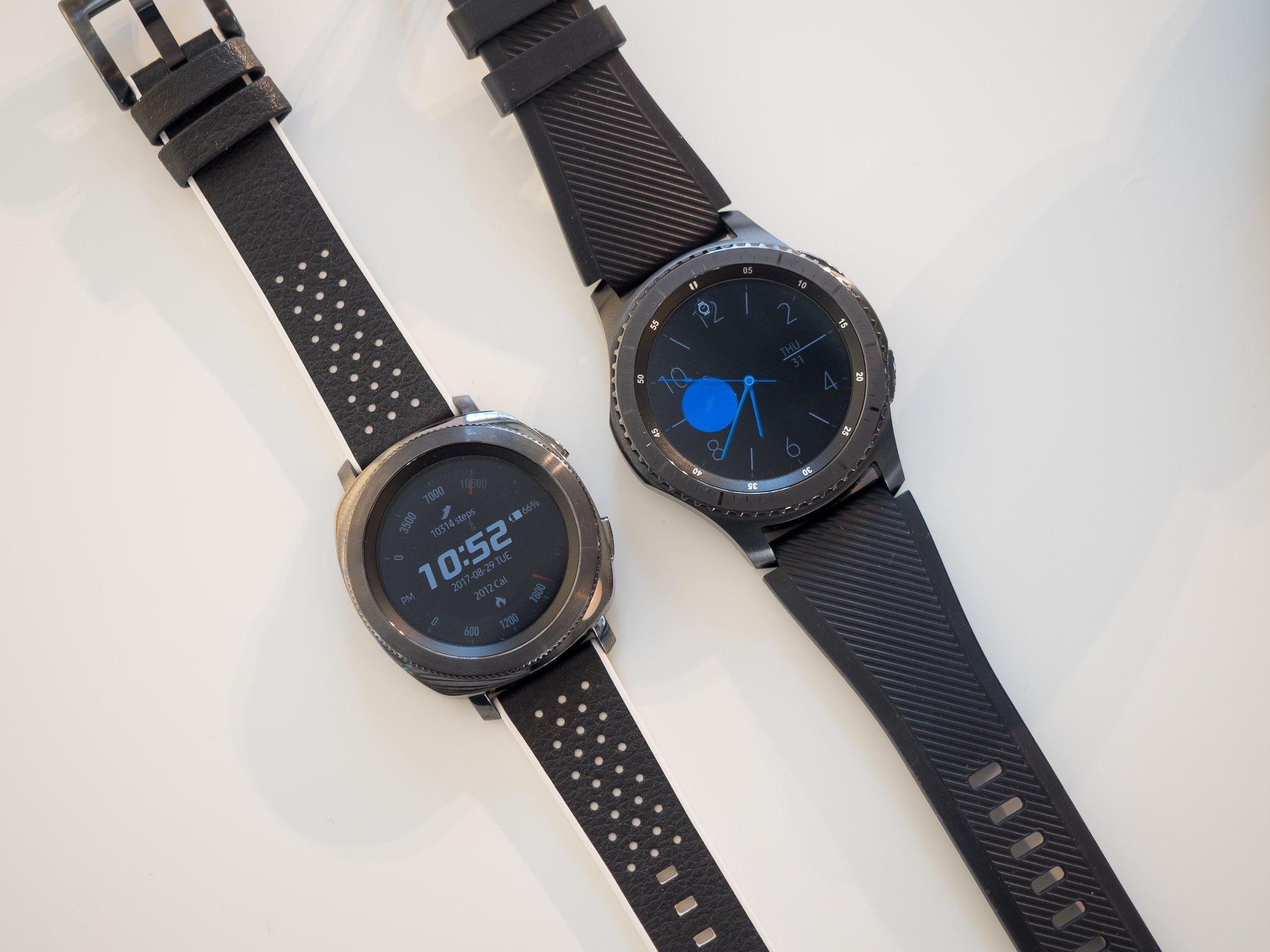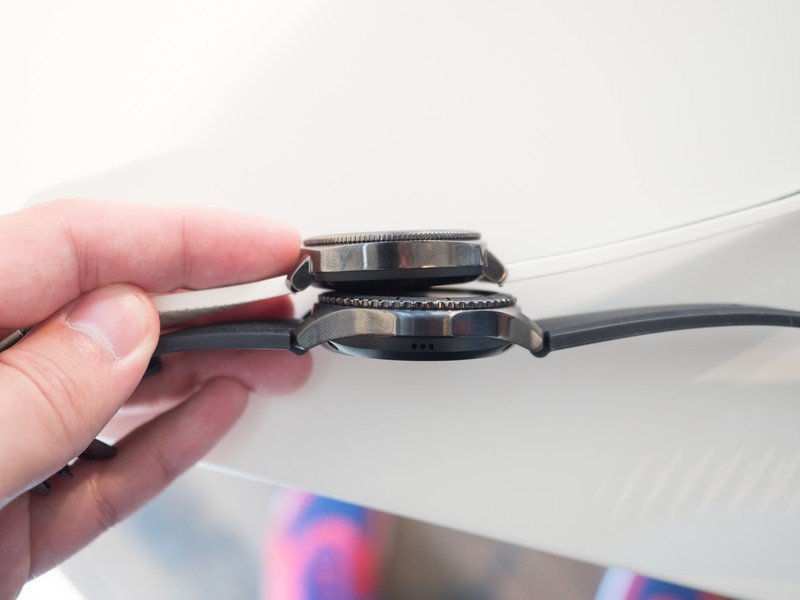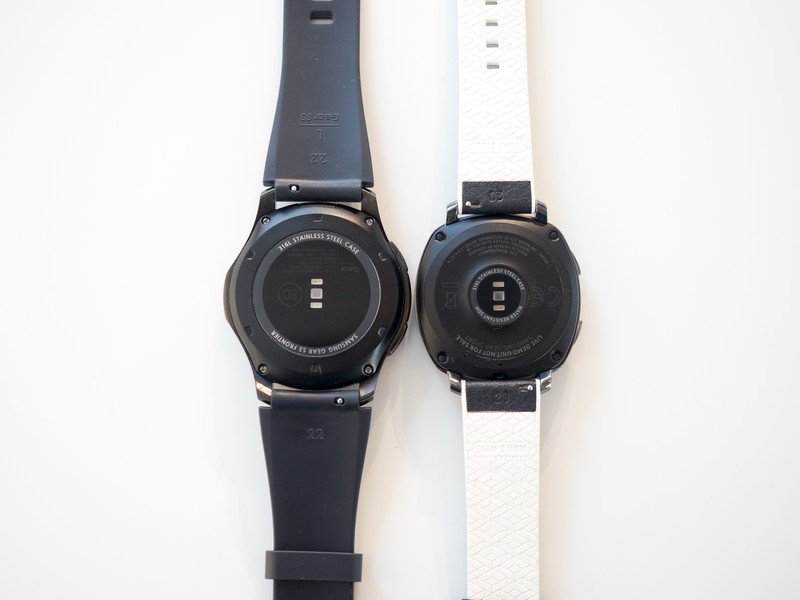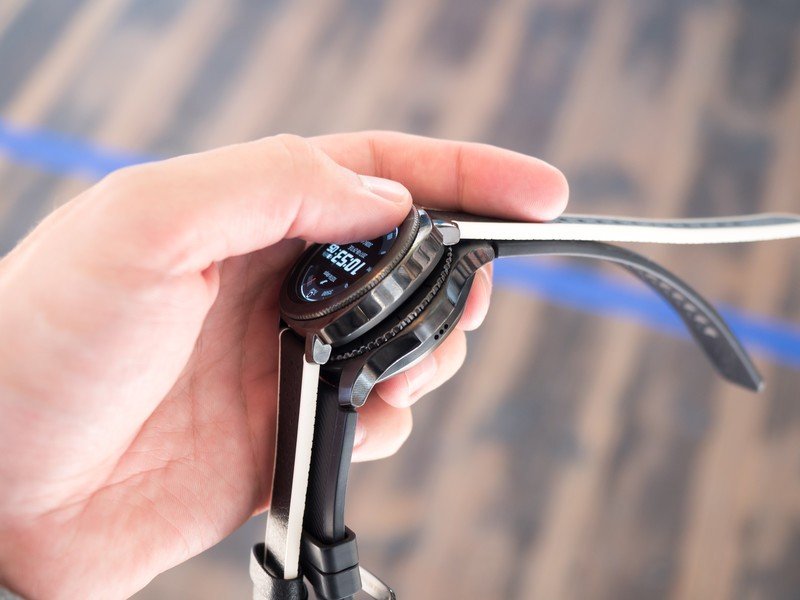Samsung Gear Sport vs. Gear S3: Which should you buy?

Samsung offers a nice three-pronged approach to wearables, starting at the bottom with the fitness-driven Gear Fit 2 Pro, notching up to the fence-sitting Gear Sport and impressing at the top with the all-around performer Gear S3. For someone who wants comprehensive fitness tracking but also a bigger screen that can handle more traditional smartwatch functions, they will instantly narrow down to just the Gear Sport and the larger Gear S3.
So which of these two Tizen-powered smartwatches is right for you? We're here to lay out the details and help you decide.
What's the same


Despite a few spec and size differences, Samsung uses the same software and interface paradigm across its Gear S2, Gear Sport, and Gear S3. It's the same Tizen OS we've been using for a couple of years now, with an emphasis on maximizing its circular interface and rotating bezel (plus a couple side buttons) for navigation.
Both watches offer you the same apps, core software capabilities, connection to your phone directly via Bluetooth or remotely via Wi-Fi, and some standalone features. They have the same 768MB of RAM, 4GB of storage, and a 1GHz processor inside. The screen resolution between the two is even the same, 360x360, though the diameter is different.
The core specs, experience, and even design, is shared between these two.
As you can see in the photos, the Gear Sport very much feels like a shrunken version of the Gear S3 Frontier. There isn't a "Classic" version of the Gear Sport, but if you compare directly to the Frontier, you get most of the same design cues. The gunmetal exterior and combination of a couple different textures looks good, and the rotating bezel remains with a slightly different knurl to it.
Even though the Gear Sport is smaller and therefore has a smaller battery, Samsung's battery claims remain consistent with the Gear S3. That's thanks to a smaller screen size, and it's great to see that you can use either one for a couple solid days without rushing for the charger. With simple use and turning off always-on watch faces, you could stretch that out for three whole days on either one.
Be an expert in 5 minutes
Get the latest news from Android Central, your trusted companion in the world of Android
What's different


The differences between these two smartwatches effectively come down to size. The Gear Sport, as its name implies, is more focused on being a fitness tracker and therefore had to shrink down in size to keep from being cumbersome. Compared to the Gear S3 Frontier, the Gear Sport is 3mm narrower, 4.5mm shorter, 1.3mm thinner and 12g lighter (sans strap). Talking about millimeters and grams doesn't seem like much, but not a watch it makes a big difference: the Gear Sport stays closer to your wrist and isn't as likely to get in your way when you're on a run or hitting the gym. It also has more heavy-duty water resistance, staying safe up to 5 ATM, with included swim tracking if that's your exercise of choice.
It really comes down to overall size and some relatively fringe features.
Being an overall smaller watch, the Gear Sport also uses a smaller watch band attachment. It will still let you use any standard watch bands you'd like, but you'll need to shop for 20 mm straps rather than the 22 mm you can currently find for the Gear S3. Outside of the dozens Samsung will make available designed to specifically match the Gear Sport, you should have no trouble finding other great-looking bands from retailers like Amazon
In that smaller package, the Gear Sport misses out on a few hardware features you can find on the Gear S3. It notably offers Samsung Pay, but only via NFC and not the neat MST technology that enables payments at any swipe-style card terminal. It doesn't have any LTE option, so you'll be on Bluetooth or Wi-Fi only. It has a smaller screen, 1.2-inches instead of 1.3, and a corresponding smaller battery.
Which should you buy?
With so much shared between the Gear Sport and Gear S3, for most people this will simply be decided by what size watch they want to wear and how often they'll use some of the niche features of the larger watch. The Gear Sport at $299 is darn close to the now-discounted Gear S3 that hovers around $325 and even drops down to the same $299 price as the Sport, making the price of little consequence.
The Gear Sport offers the same core experience in a smaller package at a lower price.
With price differences so small, the Gear Sport gives you the same core software experience as its larger sibling surrounded by a smaller casing that's easier to exercise with but also simply more compatible with a wider range of wrist sizes. It lacks a few extra features like full Samsung Pay support, LTE connectivity and a larger display, but that's probably a worthwhile trade-off for many people to have something that's comfortable for everyday wear.
The Gear S3 Frontier and Classic will still stand as the top-tier options for people who are less focused on fitness but would prefer to have something big and even more capable on their wrist. If you're going to spend more time moving through on-watch apps and managing dozens of notifications rather than tracking a gym workout, the Gear S3 may be worth it.
Andrew was an Executive Editor, U.S. at Android Central between 2012 and 2020.

